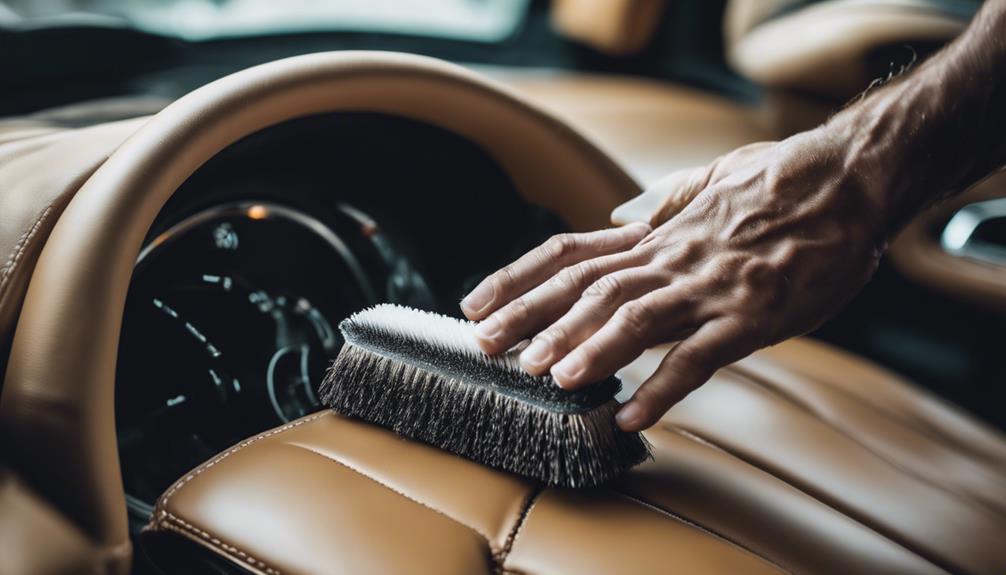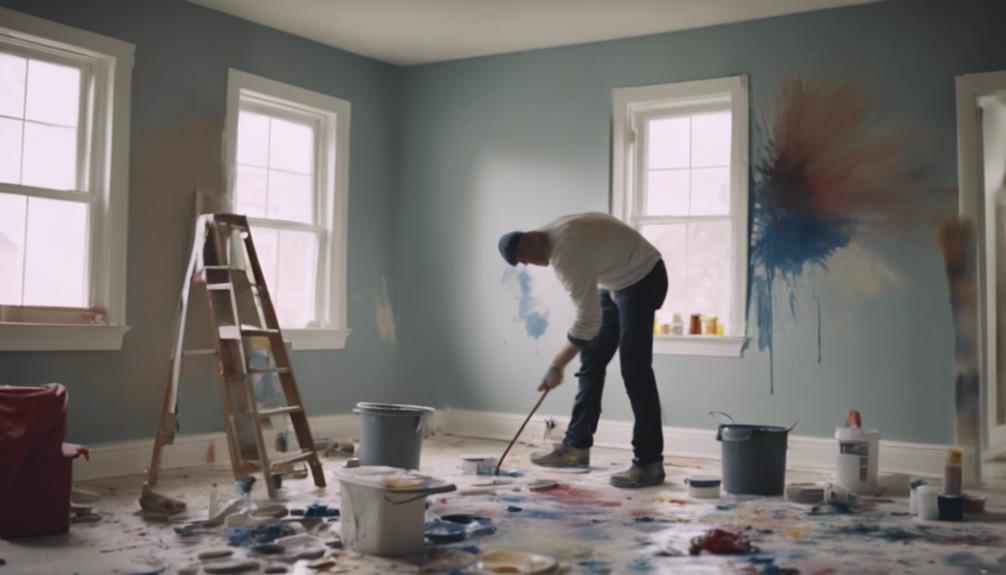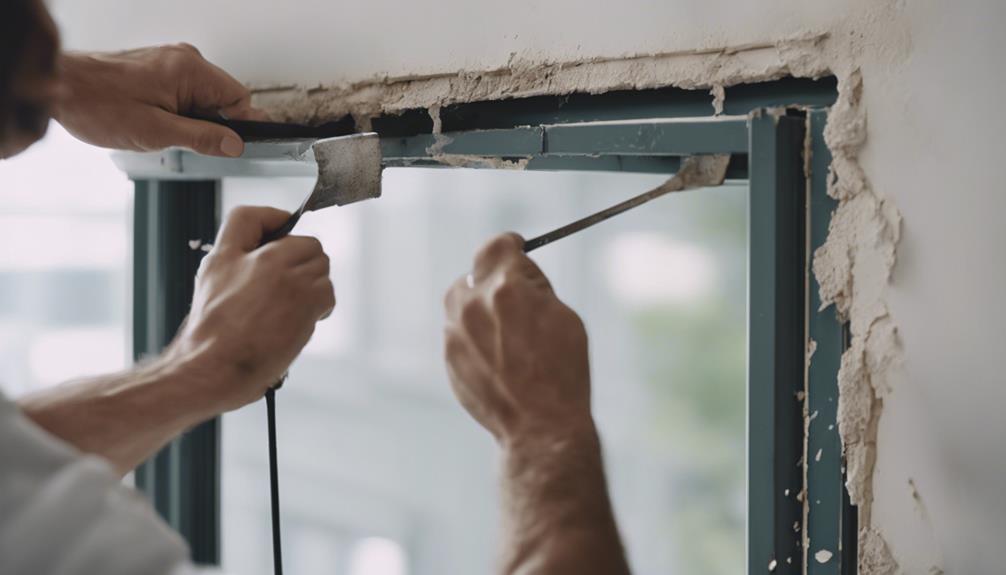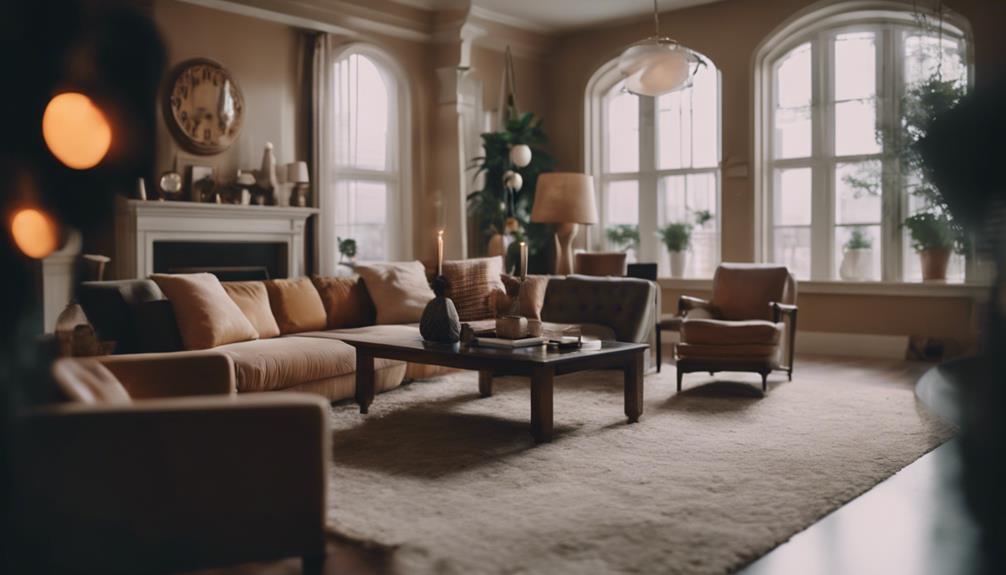When you're getting your car's interior washed, it usually takes about 20 minutes for a basic cleaning. But if you opt for a detailed session, including services like shampooing or leather conditioning, it could extend to around 2 hours. The duration depends on your car's size, its condition, and the extras you choose. Want to know more about how each factor affects the time it takes for an interior car wash? Just keep exploring to uncover additional insights and make informed decisions about your next car cleaning appointment!
Key Takeaways
- Basic interior car washes typically take around 20 minutes.
- Comprehensive detailing may require 2 hours for a deep clean.
- Services like shampooing and conditioning increase wash duration.
- Efficient tool usage is crucial for quicker interior cleaning.
- Service selection impacts the time needed for the car wash.
Factors Affecting Interior Car Wash Duration

When considering the time it takes for an interior car wash, the factors influencing the duration are crucial to understand. Interior cleaning plays a significant role in determining how long the process will take. The size and condition of your vehicle are key factors that can impact the duration of the interior wash. A larger car with more surfaces to clean will naturally take longer than a smaller vehicle. Additionally, if your car has accumulated a lot of dirt, dust, or debris, it will require more time and effort to clean thoroughly.
Moreover, if you opt for additional services like leather coating or fabric coating, this will increase the time needed for the interior car wash. These services provide extra protection and enhance the overall look of your car's interior but do add to the duration of the cleaning process. Factors like stain removal, vacuuming, and detailing all contribute to the time it takes to complete an interior car wash. So, when scheduling your car wash appointment, bear these factors in mind to make sure you allow enough time for a thorough cleaning.
Basic Interior Cleaning Time Frame

Considering the factors affecting interior car wash duration, you'll find that basic interior cleaning typically takes around 20 minutes to complete. When tackling the interior of your car, tasks like vacuuming, wiping surfaces, and cleaning windows are essential steps in achieving a fresh and tidy space.
The time needed for this basic cleaning may vary depending on the size of your vehicle and its current condition. Factors like stains, pet hair, or clutter can add extra minutes to the process. If you're looking to go beyond the basics and opt for additional services like shampooing and conditioning, expect the time required to increase accordingly.
Efficiency in using the right tools and techniques can help speed up the interior car wash process, ensuring you get back on the road in no time with a clean and inviting interior. Remember, a well-maintained interior not only enhances your driving experience but also preserves the value of your vehicle.
Comprehensive Interior Detailing Time Frame

When it comes to thorough interior detailing, you might wonder about the time it takes for a basic clean versus a deep clean.
The duration for a basic clean typically falls around 2 hours, but a deep clean can extend that timeframe based on the services you choose.
From shampooing seats and carpets to adding on treatments like leather or fabric coating, each step contributes to the overall time needed for your interior car wash.
Time for Basic Clean
Completing a basic interior car wash typically takes around 20 minutes. This quick clean focuses on tidying up the inside of your vehicle, like vacuuming the floors, wiping down surfaces, and cleaning the windows.
When it comes to interior detailing, efficiency is key. Using specialized tools such as vacuum cleaners and cleaning products designed for cars can help speed up the process. Techniques like shampooing seats and carpets, as well as cleaning plastic and leather surfaces, can enhance the overall cleanliness of your car's interior.
Duration of Deep Clean
For a thorough interior detailing service, expect a deep clean to take approximately 2 hours to complete, depending on the size and condition of your vehicle. During this deep cleaning process, every nook and cranny of your car's interior undergoes meticulous attention. From shampooing carpets to wiping down surfaces, the goal is to transform your vehicle's interior from dirty to almost brand new. Below is a breakdown of tasks involved in the deep cleaning process:
| Deep Cleaning Tasks | Time Required |
|---|---|
| Shampooing Carpets | 30 minutes |
| Vacuuming | 20 minutes |
| Cleaning Surfaces | 40 minutes |
| Leather Conditioning | 10 minutes |
These tasks collectively contribute to the thorough interior detailing time frame.
Importance of Service Selection for Timing

When it comes to getting your car's interior cleaned, the service package you choose can make a big difference in how long it takes. Factors like the extent of cleaning needed and the additional services included play a role in determining the overall timing.
Service Options Impact
Choosing the right service option plays a significant role in determining the time needed to complete an interior car wash. A basic interior car wash generally takes around 20 minutes, but if you opt for more extensive services like full interior detailing, be prepared for it to take 2 hours or more.
Add-on services such as leather coating or fabric coating can also increase the time required for the wash. It's crucial to take into account your priorities and time constraints when selecting a service option.
If you're in a hurry, a basic wash might be the best choice, while if you want a thorough cleaning, you may need to allocate more time for a detailed service. Make sure to choose wisely to match your needs with the time available.
Time Efficiency Factors
To optimize the time efficiency of your interior car wash, consider the impact of your service selection on the overall timing. When choosing car detailing services, keep in mind that each additional service adds time to the wash process. Below is a table illustrating how different detailing services can affect the duration of your interior car wash:
| Service Selection | Impact on Timing |
|---|---|
| Basic Wash | 20 minutes |
| Shampooing | +10 minutes |
| Conditioning | +5 minutes |
| Window Cleaning | +5 minutes |
Cleaning Process Duration
For peak timing efficiency during your interior car wash, consider how your choice of detailing services impacts the overall cleaning process duration.
When selecting services for your interior car wash, keep in mind the following:
- Basic Wash: Opting for a standard interior cleaning without additional services can help save time.
- Specialized Treatments: Services like leather coating or fabric coating may extend the cleaning process duration.
- Full Interior Detail: For a more thorough cleaning, be prepared for a longer service duration to make sure every nook and cranny of your interior car is properly cleaned.
Optimal Time for Shampooing Carpets

Achieving excellent results in carpet shampooing during an interior car wash typically requires a thorough process lasting between 30 minutes to 1 hour, depending on the vehicle's size and carpet condition. Interior car washes involve specialized equipment and products to guarantee a deep clean, targeting tough stains and odors.
The process includes pre-treating stains, agitating carpet fibers with a brush or machine, and efficiently extracting dirt and residue using a powerful vacuum system. Essential drying time for shampooed carpets is vital to prevent mold and mildew growth, usually achieved within 1-2 hours with proper ventilation.
Regular carpet maintenance through professional interior car washes not only enhances the appearance and texture of the carpet but also extends its longevity. By investing time in proper carpet shampooing, you can greatly improve the overall cleanliness and comfort of your vehicle's interior, creating a more enjoyable driving experience for you and your passengers.
Time Estimate for Conditioning Leather

When moving from shampooing carpets to conditioning leather during an interior car wash, the next step typically involves revitalizing and protecting the leather surfaces in your vehicle. Conditioning leather is important to maintain its quality and appearance over time.
Here's what you need to know about the time estimate for conditioning leather:
- Time Frame: Conditioning leather surfaces usually takes around 15-30 minutes, depending on factors like the size of your vehicle and the current condition of the leather.
- Process: The procedure includes applying a leather conditioner evenly on the seats, steering wheel, and any other leather surfaces to moisturize and protect them.
- Benefits: Conditioning leather helps prevent issues like cracking, fading, and drying out, ultimately extending the lifespan of your vehicle's leather interior.
Deep Cleaning Time Range

To estimate the time required for a deep cleaning during an interior car wash, consider that the process typically takes about 2 hours to complete. When opting for a full interior deep cleaning, you guarantee that every nook and cranny of your car's interior receives thorough attention. Below is a breakdown of the tasks involved and the estimated time range for each:
| Task | Estimated Time Range |
|---|---|
| Vacuuming | 30-45 minutes |
| Shampooing | 45-60 minutes |
| Upholstery Care | 20-30 minutes |
| Leather Treatment | 15-25 minutes |
| Odor Elimination | 20-30 minutes |
The time needed for deep cleaning can vary based on the size of the vehicle and its current condition. Additional services like stain removal or pet hair cleanup may extend the overall duration. By investing in a full interior deep cleaning, you're not only restoring your car to its best condition but also ensuring a fresh and inviting environment for your travels.
Understanding Time Needed for Specific Services

Understanding the time required for specific services during an interior car wash is essential for planning efficiently and ensuring a thorough cleaning process. When scheduling your car wash, keep in mind the following:
- Additional Services: Services like shampooing, conditioning, and window cleaning can increase the time needed for the interior car wash, depending on the level of detailing required.
- Vehicle Size and Condition: The size and condition of your vehicle play a significant role in determining how long the interior car wash will take. Larger vehicles or those with heavy soiling may require more time.
- Mini Details vs. Full Detailing: Mini details typically take less time than full interior detailing services. If you're short on time, opting for a mini detail can be a quicker alternative while still maintaining a clean interior.
Efficient Time Management for Interior Car Washes

For efficient time management during interior car washes, prioritize using specialized equipment to streamline the process. By investing in high-quality vacuums, steam cleaners, and detailing brushes, you can tackle dirt and grime more effectively, reducing the overall time it takes to clean the interior of your car. Here's a simple table outlining the benefits of using specialized equipment:
| Specialized Equipment | Benefits |
|---|---|
| High-Quality Vacuums | Efficiently remove dirt and debris from carpets and upholstery. |
| Steam Cleaners | Sanitize surfaces and eliminate tough stains with ease. |
| Detailing Brushes | Reach intricate areas for a thorough cleaning experience. |
Frequently Asked Questions
How Long Does It Take to Wash the Interior of a Car?
When washing the interior of a car, timing can vary. Factors like vehicle size and condition play a role. Basic interior washes usually take around 20 minutes. Additional services, such as shampooing or window cleaning, can extend this time.
Tasks like vacuuming, seat cleaning, and wiping the dashboard are standard. Efficiency in tools and techniques helps speed up the process. Consider these factors for a thorough and timely interior car wash.
How Long Does Inside and Out Car Wash Take?
When you're looking to get your car sparkling inside and out, timing is key. The duration of an inside and out car wash can vary but generally takes about 30-45 minutes. This includes both the interior and exterior cleaning processes.
Factors like vehicle size, additional services, and detailing needs can influence the time taken. Using efficient tools and techniques can help streamline the process for a thorough and swift car wash experience.
How Many Minutes Does a Car Wash Take?
Car washes typically last around 20 minutes, but the duration can vary depending on your vehicle's size and condition. Adding services like shampooing or window cleaning may extend the time.
Using efficient tools and techniques helps speed up the process. A quick and thorough interior cleaning guarantees your car looks fresh and well-maintained.
How Long Should a Maintenance Wash Take?
When tackling a maintenance interior car wash, plan for about 20 minutes. This timeframe can shift based on your vehicle's size and cleanliness. Vacuuming, surface wiping, and window cleaning all play a role in the duration.
Speed up with specialized tools and products. If you opt for extras like seat shampooing or leather conditioning, expect a longer session.
Get ready for a sparkling ride in no time!
Conclusion
So, next time you head to the car wash, remember that the duration of your interior cleaning depends on the services you choose. From a quick basic cleaning to a thorough detailing session, each option has its own time frame.
Just like a well-oiled machine, your car will shine bright after the interior wash, making you feel like a VIP cruising down the road.









